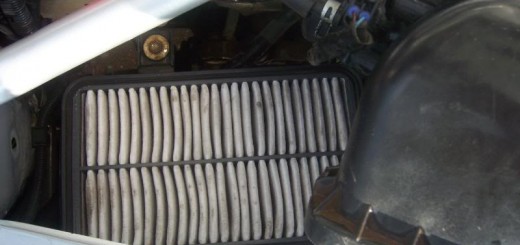For those of you that dont know, when designing the MR2 Toyota went down the path of making it a Ultra Low Emissions Vehicle (ULEV). Doing this meant adding a whole load of extra emmisons control equipment to the engine, chief among these being 2 additional catalytic convertors installed in the exhaust manifold. The theory behind it being that when starting from cold, these cats heat up and get working a lot faster therby reducing the emmisions that bit sooner.
The problem with these cats, is that in order to endure the very high temperatures in the manifold, they have to made of a ceramic material. This ceramic might be good with high temperatures, but is incredibly brittle and doesnt like vibration. The particles that do break free are also very-very hard, so if they manage to get into the cylinders they aren’t going to be to friendly to the insides of yor engine…
I’ve been regularly inspecting my own precats for a while now, and they’ve always been in good condition, However after a recent check revealed that they were starting to deteriorate, I decided it was time they came out beofe they took my engine with them. The first signs of deterioration were noted at around 30,000 miles, 2000 miles after my previous inspection. 200 miles later, the situation had deteriorated even further. These cats go bad very-very quickly…
Heres how I removed the cats…
Note: Clearly, neither I nor MR2-ROC can condone you ripping lumps of emmisions control equipment out of your car. Its safe to say the the warranty on my manifold at least and probably my main cat as well have now been well and truly voided, so the same will go for you. Basically, if you decide to go down this route as I have, you’re on your own… On the plus side, if its not in there, it cant break.
Toolkit required
Trolley Jack
Axle Stands
10mm spanner
10mm socket on 6″ extesnion
12mm spanner
12mm socket and various extensions
14mm socket
Hammer
Vice
Long flat bladed screwdriver
High pressure water or air supply
Large vocabulary of swear words
In order to remove the precats, you first have to remove the exhaust manifold from the car, Care should be taken to apply penetrating oil to the various nuts and bolts some time before undoing them
1/ Jack up the rear of the car and place on axle stands.
2/ Remove the splash guard from under the rear bumper
3/ Remove 3 bolts from the forward splash guard to let it hang down.
4/ Remove the 3 14mm nuts that secure the main cat pipe to the manifold
In the engine bay;
5/ Using a 22mm O2 sensor socket, remove the 2 O2 sensors from the manifold.
6/ Remove the 4 bolts securing the manifold upper heat shield
7/ Remove the 2 bolts that secure the lower part of the manifold to the engine block. These are ‘behind’ the manifold and not readily visible. ! of them is 12mm, the other 14mm.
8/ Remove the 5 nuts securing the manifold to the cylinder head.
The manifold can now be lifted out of the top of the engine bay.
Decatting the precats…
Actually getting the precats out is pretty simple, here’s what mine looked like from above and below before I started, you can see some of the degradation thats taken place in the first photo:


And here are the surgeons tools:

Removal is simply a case of attacking the precat matrix with hammer and screwdriver until its broken up into lumps small enough to be able to get them out through the lower exhaust port. The ceramic material gives up very easily, it only takes 1 or 2 taps on the screwdriver to do this…

After digging around for a while you will also expose the glass fibre that surrounds and supports the cat matrix, this has to come out too.

Once out you’ll have a big pile of very useless, but rather expensive catalytic material left over. I beleive some places do recycle this stuff to reclaim the precious metal content, so if your now feeling guilty about your effect on the environment, this could be a way to ease your concience

Once its all out, you’ll be left with an empty manifiold like this;

You now need to clean it, as there is still an awful lot of potentially damaging dust and particles left inside. I would recommend high pressure water like a jet wash or an airline for this, as an chemical residue from solvent cleaners may have a damaging effect on the O2 sensors.
Once clean and dry, re-building is simple the reverse of the process used to take the manifold out in the first place.
Happily, I’ve not noticed any increase in noise level from removing these. Performance certainly isnt any worse, and in fact the car may have benefitted in the form of slightly increased torque, but I cant say for sure… What is certain though, is that the pre-cats are going to have a hard time damaging my engine from the workshop bin, and I’m a lot happier now that these ticking time bombs are not a problem…MOT tests wont be a problem, as I still have the main cat in place, which is more than capable of doing the work. I dont have a ULEV car anymore, but I do have one that with a bit of luck will last a bit longer.
This documentation in no way replaces the Toyota MR2 Repair Manuals. The purpose of this content is only to provide supplementary information to fellow MR2 enthusiasts. Midship Runabout and its contributing authors will not be held responsible for any injury or damages that may occur as the result of practicing any of the methods or procedures described within this website. Article and photo submissions are property of the contributing author.

